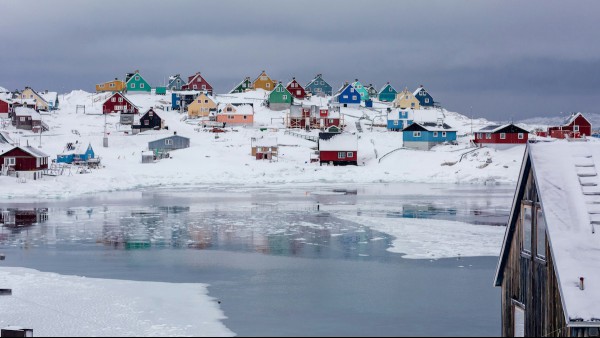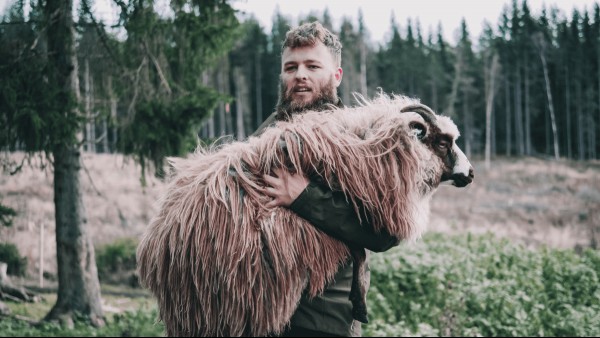What are the Inuit languages, and where are they spoken? As you might guess if you’ve heard the term “Inuit” before, the language family is native to the far northern hemisphere. Namely, Alaska, northern Canada, and Greenland. But the exact number of languages in the family isn’t clear. It depends on whether or not we consider mutually-intelligible dialects as distinct languages.
What we can say for sure is that there are 4 subdivisions of the Inuit languages. These are Inupiaq (northern Alaska); Inuvialuktun (Canadian Northwest Territories and Nunavut); Inuktitut (Quebec and Labrador), and Kalaalisut (Greenland). Each of these groups can be further divided into even more dialects. Needless to say, for a small language family, it packs a punch!
How Many People Speak Inuit Languages?
In total, only around 100,000 people speak Inuit languages. Half of these speakers live in Greenland. Kalaalisut — also known as Greenlandic — Greenland’s official language. This means it’s used in public settings but native speakers may use different dialects at home. Kalaalisut is native to most of Greenland’s west coast and around the capital, Nuuk. In the east (near the settlement of Tasiilaq) the dialect of Tunumiisut is more dominant. Meanwhile, in the northwest (around Qaanaaq), the local dialect is Inuktun.
The next largest Inuit-speaking population is in Canada. Here, there are around 40,000 speakers. These can be broken into 2 broad subdivisions: Inuvialuktun and Inuktitut. Both can be subdivided into further dialects, spoken across Canada’s northern territories and provinces.
Finally, we have the Alaskan branch of the Inuit family, Inupiaq. It’s estimated there are only around 3,000 native speakers of this language. As the majority of these people are over the age of 40, it’s expected that within a generation or two, Inupiaq will become extinct.
How Similar Are The Inuit Languages?
Since Inuit languages are quite similar, speakers of neighboring languages and dialects can often understand each other. This is good news for native speakers but bad news for linguists! It makes it very difficult to say exactly how many Inuit languages there are. Knowing when one language ends and another begins isn’t clear-cut. With many language families, distinctions are imposed (or reinforced) by political borders. This is not the case with Inuit.
To show the similarities though, let’s compare some common words. In Inupiaq and Inuvialuktun, “polar bear” is nanuq. In Inuktitut and Kalaallisut, it is nanoq. In Inupiaq, Inuktitut, and Kalaallisut, the word “river” is kuuk. In Inuvialuktun, it is kuugaq. Other words are shared between the languages, such as the word “ten,” which is qulit in all 4.
Despite some similarities, Inuit languages are not completely interchangeable. While speakers of neighboring languages can communicate, intelligibility tends to decrease with distance. Throw an Alaskan-Inuit speaker into a room with a Greenlandic speaker, and they probably won’t understand each other!
This said, the Inuit languages have several unique characteristics in common. For instance (like the Mayan languages) Inuit uses a base-20 number system. On a global scale, this is unusual. Most languages prefer a base-10 (or “decimal”) number system. The majority of Inuit languages also use the voiceless lateral fricative sound, /ɬ/. We’ll admit this is a bit of a linguistic tongue-twister — all you need to know is that it’s a type of consonant made using the friction of breath. It’s also one of the most unusual sounds in all the world’s languages and is found only in Inuit, Welsh, and Zulu.
For the most part, Inuit languages also share consistent writing systems — a modified form of the Latin alphabet. However, Inuktitut (Canada) also has a number of special written syllables, with 1 symbol representing 1 syllable. Rather than evolving organically over time, this writing system is unusual in that it was developed manually. The current standardized version was approved in the 1970s.
Are The Inuit Languages Related To Any Other Languages?
Being so isolated from the rest of the world, it would be easy to assume that Inuit is an entirely distinct language family. In fact, it’s a subgroup of the larger Eskimo-Aleut language family (also known as Eskaleutian). This has two branches. The first, Aleut, consists of just one living language. It is spoken on the Aleutian and Pribilof Islands, an archipelago that stretches between Alaska and Russia. The other branch, the Eskimo family, is subdivided into Yupik and — you guessed it! — Inuit. The Yupik languages are used in southwestern Alaska and across the Bering Sea, in the Chukotka region of Russia.
Beyond this, there’s no strong evidence to suggest that the Eskimo-Aleut languages are related to any other language families. Interestingly, they don’t even seem to be related to the other native languages of North America. However, some believe that the Eskimo-Aleut languages may be distantly related to Uralic. This is because there are some similarities between Kalaalisut (Greenlandic) and Finnish. But as is often the case in the ever-fascinating and complex world of linguistics — we’ll probably never know for sure!











